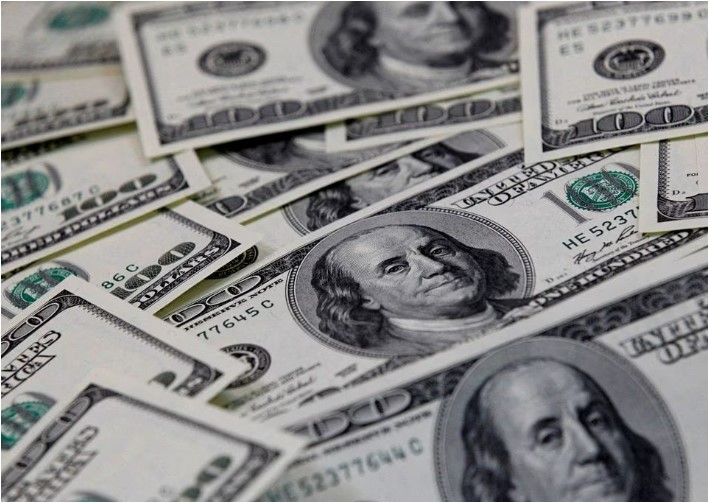
Introduction
US Inflation In the ever-evolving landscape of global economics, the United States finds itself at a crossroads. As global markets eagerly await the release of major US consumer price data for September, the implications ripple across the world. This data is crucial in assessing the current inflationary environment within the country and carries significant weight after recent remarks by Federal Reserve officials, which have cast uncertainty on the possibility of another US interest rate hike this year.
The Significance of US Inflation Data
The forthcoming US consumer price data for September is much more than just a statistical release. It serves as a vital barometer for the financial markets and policymakers. The data will play a pivotal role in shaping the future odds of US interest rates later in the year. This significance is heightened by the Federal Reserve’s consistent commitment to data-driven decision-making.
Insights from Fed Officials
Lorry Logan’s Perspective
Dallas Fed President Lorry Logan emphasizes the importance of maintaining tight monetary conditions until inflation returns to the target rate of 2%. He underlines that the labor sector remains robust, suggesting that inflationary pressures may persist.
Philip Jefferson’s Cautious Stance
Fed Deputy Chair Philip Jefferson advocates for a cautious approach in light of the recent surge in treasury yields. This signifies that the Fed acknowledges the impact of fluctuating yields on monetary policy.
Neil Kashkari’s Concerns
Minneapolis Fed President Neil Kashkari raises a red flag by stating that higher yields could compel the Fed to reconsider its approach to monetary tightening. This reflects concerns about the potential impact of increasing yields on the overall economy.
Mary Dale’s Perspective
San Francisco Fed President Mary Dale highlights that tighter financial conditions grant the Fed the luxury of making more measured decisions. This suggests that the current economic environment allows for a more balanced and strategic monetary policy.
Fed Minutes Unveiled
The recently released minutes from the Federal Reserve’s September policy meeting reveal a diverse range of opinions regarding the need for another interest rate hike. While the minutes hinted at the possibility of a rate hike, they also exposed divisions among Fed officials. However, there was unanimity on one key aspect: interest rates should remain high until inflation is successfully anchored at the 2% target.
US Interest Rates in Flux
The market’s interpretation of the Fed’s stance on interest rates has fluctuated following the release of the minutes. The pricing for a 0.25% US interest rate hike in November has dipped to a mere 8%, and expectations for such a hike in December have similarly fallen to 28%. These fluctuations reflect the uncertainty that has clouded the path to future rate hikes.
US Inflation Data on the Horizon
In the world of economics, the present is often dictated by the future. Today, the world’s attention is squarely on the expected US consumer price data for September. The projections indicate a slowing down of inflation, with consumer prices expected to rise by 3.6% year-on-year, down from 3.7% in August. Core prices, which provide a clearer view of underlying inflationary trends, are projected to increase by 4.1% year-on-year.
Dollar’s Response
The implications of this data are far-reaching. If consumer prices exceed expectations, the likelihood of another US interest rate hike this year is bolstered. This, in turn, would underpin the value of the US dollar against major global currencies. The greenback would emerge as a stronger contender in the currency markets, impacting trade, investments, and global finance.
In conclusion, the release of US inflation data for September is a crucial event that will have profound effects on the world of finance. The market is currently in a state of flux, with the possibility of an interest rate hike hanging in the balance. As we await the numbers, one thing is clear: the path to economic stability is fraught with uncertainty, and every data point is a piece of the puzzle.
FAQs
1. How does inflation affect interest rates?
Inflation has a direct impact on interest rates. When inflation rises, central banks may increase interest rates to curb excessive spending and lending, which can further exacerbate inflation.
2. Why is the 2% inflation target significant for the Federal Reserve?
The 2% inflation target is seen as a balance between stimulating economic growth and preventing excessive inflation. It represents the Federal Reserve’s ideal inflation rate for a stable and healthy economy.
3. What is the relationship between treasury yields and interest rates?
Treasury yields and interest rates are closely related. When treasury yields rise, it can signal expectations of higher interest rates, as investors demand better returns on their investments.
4. How do fluctuations in the US dollar impact international trade?
Fluctuations in the US dollar can impact international trade by affecting the cost of imported and exported goods. A stronger dollar makes US exports more expensive and imports cheaper, potentially impacting trade balances.
5. How do market participants react to unexpected inflation data?
Market participants may react to unexpected inflation data by adjusting their investment portfolios. Higher-than-expected inflation may lead to increased interest in assets that can serve as hedges against inflation, such as commodities or inflation-protected securities.
